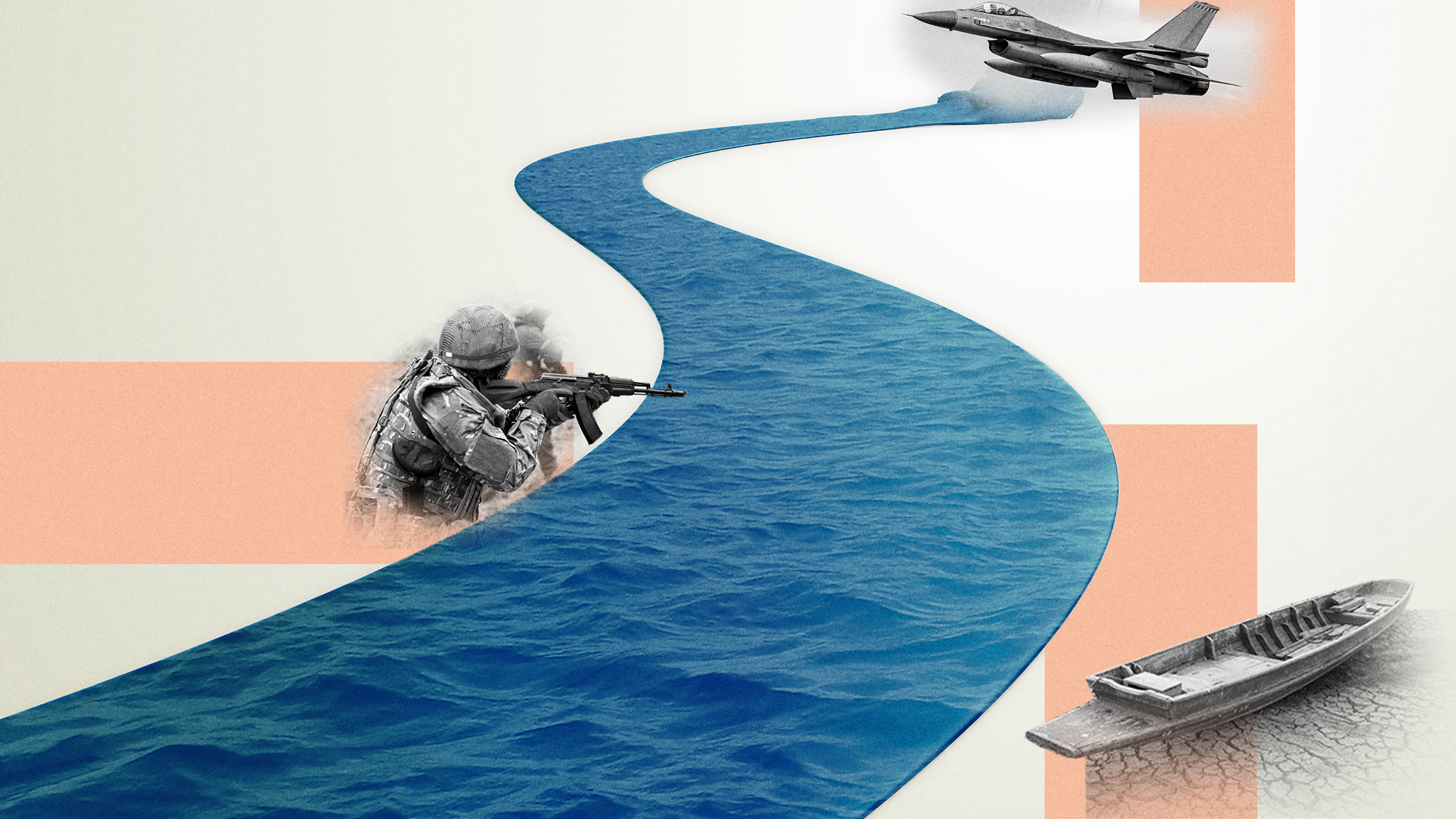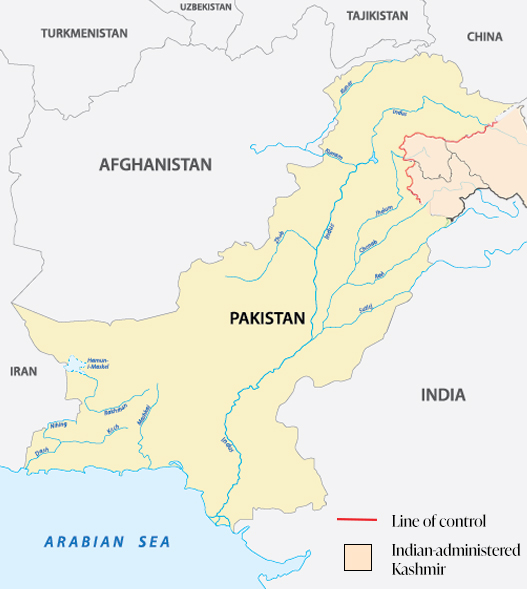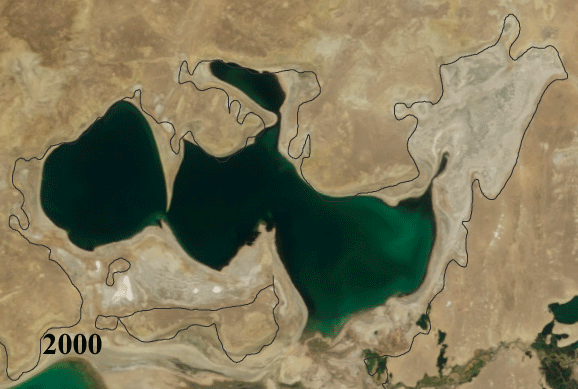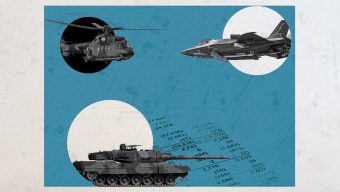“Water has no enemy.” (Yoruba Proverb)
Human communities have always been based around water, and the importance of this most basic of resources is only increasing in modern society. Growing the food necessary to sustain eight billion people, cooling AI data centers that generate incredible heat, and providing clean energy in the transition from fossil fuels all require huge amounts of water. Global water consumption for domestic and manufacturing use quadrupled from 1950 to 2010 and as the world heats up, the importance of this resource is only becoming more acute. As with any resource, its increasing scarcity in some areas brings with it geopolitical tensions.
The fear of water supplies being cut off by an unfriendly neighbor or bad actor runs deep in the psyche of some populations. Take Kashmir, one of the world’s most militarized areas, through which the River Indus and its tributaries flow. The river is fundamental to sustaining society in Pakistan, where almost 90% of the land is considered arid or semi-arid. More than one third of the country’s population is employed in agriculture, and the Indus is the primary river system to support this vital industry.
Map showing the River Indus system in Pakistan
In neighboring India, the river supports the northwest states, including Punjab, which is considered the country’s “bread basket” with approximately 18% of its wheat production. After the partitioning of the state of Punjab in 1947, the water-sharing system that had been in place under the British was continued until April 1, 1949, when the day after this water-sharing agreement ended, India cut off the water supply to Pakistan in a clear provocation to its newly-formed neighbor. The young Pakistani government decided against military retaliation and instead agreed to attend an Inter-Dominion conference which provided a temporary suspension of hostilities.
Smaller disputes continued until the signing of the Indus Water Treaty in 1960, but tensions have recently reemerged and in the wake of a terror attack on an Indian Army brigade in Kashmir in 2016, recently re-elected Indian Prime Minister Narendra Modi forebodingly declared “blood and water cannot flow simultaneously.” Pakistan’s statehood has been dominated by its relationship with its larger neighbor and, while cultural and religious tensions are abound, the supply of water has been a key battleground between the two governments. The hostilities over the area show no sign of letting up, and China’s entry into the Kashmiri battleground has only increased the threat of military conflict.
The tension in the sub-continent stems from the necessity of water to feed populations, but access to the world’s waterways is also key for trade. Russian rulers have recognized the vitality of having a warm deepwater water port for hundreds of years, and Catherine the Great was a forerunner to Vladimir Putin by annexing Crimea in 1783, allowing her empire access to the strategically important port of Sevastopol. Having access to a port that remained open all year round and provided access to major trading routes in Europe and beyond is key to Russia’s trade. Indeed, approximately 30% of all Russia’s sea trade runs through the Black Sea, and its naval fleet has become a major player in Moscow’s war in Ukraine.
Russia’s Black Sea fleet was initially involved in shelling Ukraine’s coastal cities, but Kyiv has been striking back more recently with the Ukrainian navy claiming a third of Russia’s warships in the area have been disabled. Preventing Russian dominance in the Black Sea is key to maintaining Ukrainian grain exports and other shipments, as well as providing morale-boosting headlines for those in the war zone.
Saudi Arabia’s ongoing tensions with Iran and concurrent conflict with the Iranian-backed Houthis in Yemen show the importance of water supply in arid regions. A look at a map of Saudi Arabia shows the stark importance of water to the country: there are no permanent lakes or rivers in the Arabian peninsula. Such is the importance of water to the Saudis, the state hatched plans in the 1970s to push polar icebergs to the Red Sea using submarines in order to provide drinking water. Modern technology has seen Saudi Arabia develop the world’s largest water desalination facilities, and these plants produce more than 60% of the Kingdom’s fresh water.
While oil has been the driver of the country’s economic success, access to water is a strategic weakness its regional rivals target. Having large plants in coastal regions is far from ideal from a defense viewpoint, and missile attacks from the Houthis often target the country’s 33 water desalination facilities. Attacking these plants not only represents a risk for the Saudi economy, but for its population to be able to eat, drink, and bathe.
It is not only in arid areas where water can drive hostilities. China’s damming of the Mekong River has strained its relations with those countries – Cambodia, Laos, Myanmar, Thailand, and Vietnam – which depend on the waterway for their economies. While in Western Africa, Lake Chad has become the scene of widespread violence and displacement in the areas of Cameroon, Chad, Niger, and Nigeria that surround it – in part due to the lakes shrinking in size and the increase in the population depending on it.
In all the above conflicts, water is by no means the only factor in escalating tensions, but it is an aggravating factor. This is sadly a fact of geopolitical life; water is a scarce resource that can – and will – be targeted by warring factions to cause turmoil and distress. That said, what can be done to prevent water disputes from becoming a tipping point into military conflict?
A two-pronged approach is needed. Firstly, increasing water availability through improved infrastructure, waste reduction, and more efficient use can ease the pressure on supplies that force states to defend themselves from scarcity. The Northern Aral Sea Project is an example of this, with Kazakhstan, Kyrgyzstan, Tajikistan, Turkmenistan, and Uzbekistan all benefitting from the construction of the Kok-Aral dam. This major infrastructure project was a response to the degradation of the Aral Sea caused by Soviet river diversion policies in the 1960s and was designed to prevent the disappearance of the North Aral Sea.
Comparison of the North Aral Sea between 2000 and 2011
With the increasing water levels, fishing stocks have increased from a low of 52 tons caught in 2004 to around 3,000 tons in the Northern Aral Sea in 2009, while salinity rates have more than halved. Despite regional politics stalling the second phase of the project, its implementation has shown how trans-national infrastructure can lower tensions and ease supply issues.
The second angle to the approach is recognizing the importance of regulation, bi-lateral treaties, and agreements on water management. These directives provide the rules-based order that is needed to ensure that water supply is not used as a weapon by one state over another. Take the management of the world’s longest river as an example. The Nile Basin Initiative was founded in 1999 by the water ministers of nine countries that share the river: Egypt, Sudan, Ethiopia, Uganda, Kenya, Tanzania, Burundi, Rwanda, and the Democratic Republic of Congo (DRC) to bring about socio-economic development and promote peace and security by minimizing water resource-based conflicts. The initiative is comprised of three collaborative institutions with success stories including the creation of a joint data analysis tool to improve water resource planning and the training of over 2,000 individuals in environmental management.
While tensions remain between the Upper Nile states and the two main beneficiaries of former colonial policies (Egypt and Sudan), stunting the project’s ability to reach all of its goals, the initiative’s 25-year history and collaborative nature can serve as an example of government institutions easing the hostility that resources place on international relations.
As with any aspect of international relations, having geopolitical rivals reach fair agreements over a shared resource is a difficult – but not impossible – task. Ultimately, water governance is not only about preventing conflict, but in times when the threat of war is becoming a reality across the globe, it is essential that this most basic of resources eases pressure rather than increases tensions.
© IE Insights.













